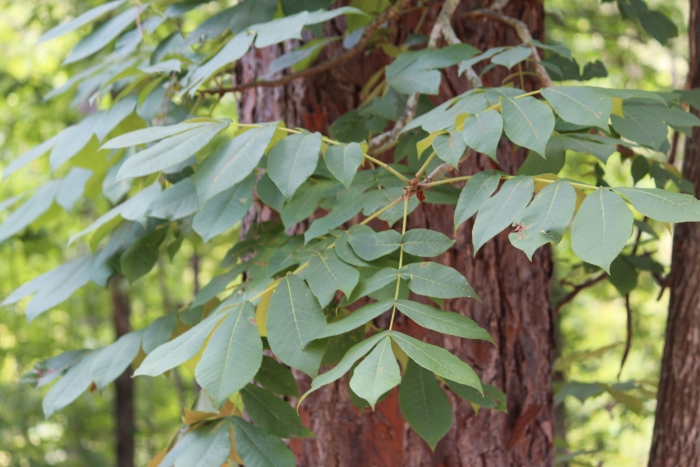Sand Hickory
(Carya pallida)
Sand Hickory (Carya pallida)
/
/

Ashwin Srinivasan
CC BY 4.0
Image By:
Ashwin Srinivasan
Recorded By:
Copyright:
CC BY 4.0
Copyright Notice:
Photo by: Ashwin Srinivasan | License Type: CC BY 4.0 | License URL: http://creativecommons.org/licenses/by/4.0/ | Rights Holder: Ashwin Srinivasan | Publisher: iNaturalist | Date Created: 2018-06-09T12:01:41-07:00 |




























Estimated Native Range
Summary
Carya pallida, commonly known as Sand Hickory, is a deciduous tree native to dry upland forests, sandy woods, and savannahs in the Southeastern United States. It is a medium to large hickory species that typically reaches heights of 30 to 100 feet (9 to 30 meters), with a slender, towering crown when grown in open areas. The bark of young trees is smooth and light-gray or brown, maturing into deep furrows with dark-gray hues. Sand Hickory produces catkins that release pollen to be dispersed by the wind, with flowering occurring from March to May. The flowers are inconspicuous, with colors ranging from yellow to green to brown. The tree produces oval, dark-brown nuts encased in a thin shell, which are sweet-tasting and favored by wildlife such as rodents, squirrels, and large birds.
Sand Hickory is valued for its hard, durable wood and the sweet nuts it produces. It is not commonly planted in urban landscapes due to its size and the difficulty of transplanting, but it can be used in naturalized areas or large rural properties. It thrives in full sun and requires medium amounts of water, preferring well-drained sandy soils. While not widely available in nurseries, it can be a unique addition to a native plant garden or restoration project. Sand Hickory is relatively free of serious pests and diseases, but it can be susceptible to hickory bark beetle and fungal infections.CC BY-SA 4.0
Sand Hickory is valued for its hard, durable wood and the sweet nuts it produces. It is not commonly planted in urban landscapes due to its size and the difficulty of transplanting, but it can be used in naturalized areas or large rural properties. It thrives in full sun and requires medium amounts of water, preferring well-drained sandy soils. While not widely available in nurseries, it can be a unique addition to a native plant garden or restoration project. Sand Hickory is relatively free of serious pests and diseases, but it can be susceptible to hickory bark beetle and fungal infections.CC BY-SA 4.0
Plant Description
- Plant Type: Tree
- Height: 27-75 feet
- Width: 25-60 feet
- Growth Rate: Slow
- Flower Color: N/A
- Flowering Season: Spring
- Leaf Retention: Deciduous
Growth Requirements
- Sun: Full Sun
- Water: Medium
- Drainage: Medium, Fast
Common Uses
Bee Garden, Bird Garden, Butterfly Garden, Edible*Disclaimer: Easyscape's listed plant edibility is for informational use. Always verify the safety and proper identification of any plant before consumption., Fragrant, Low Maintenance
Natural Habitat
Native to dry upland forests, sandy woods, and savannahs in the Southeastern United States
Other Names
Common Names: Pale Hickory
Scientific Names: , Carya pallida, Hicoria pallida, Carya pallida var. apposita, Carya pallida var. arenicola, Carya pallida var. pyriformis, Hicorius pallida, Hicorius pallida var. apposita, Hicorius pallida var. arenicola, Hicorius pallida var. arkansana
GBIF Accepted Name: Carya pallida (Ashe) Engl. & Graebn.